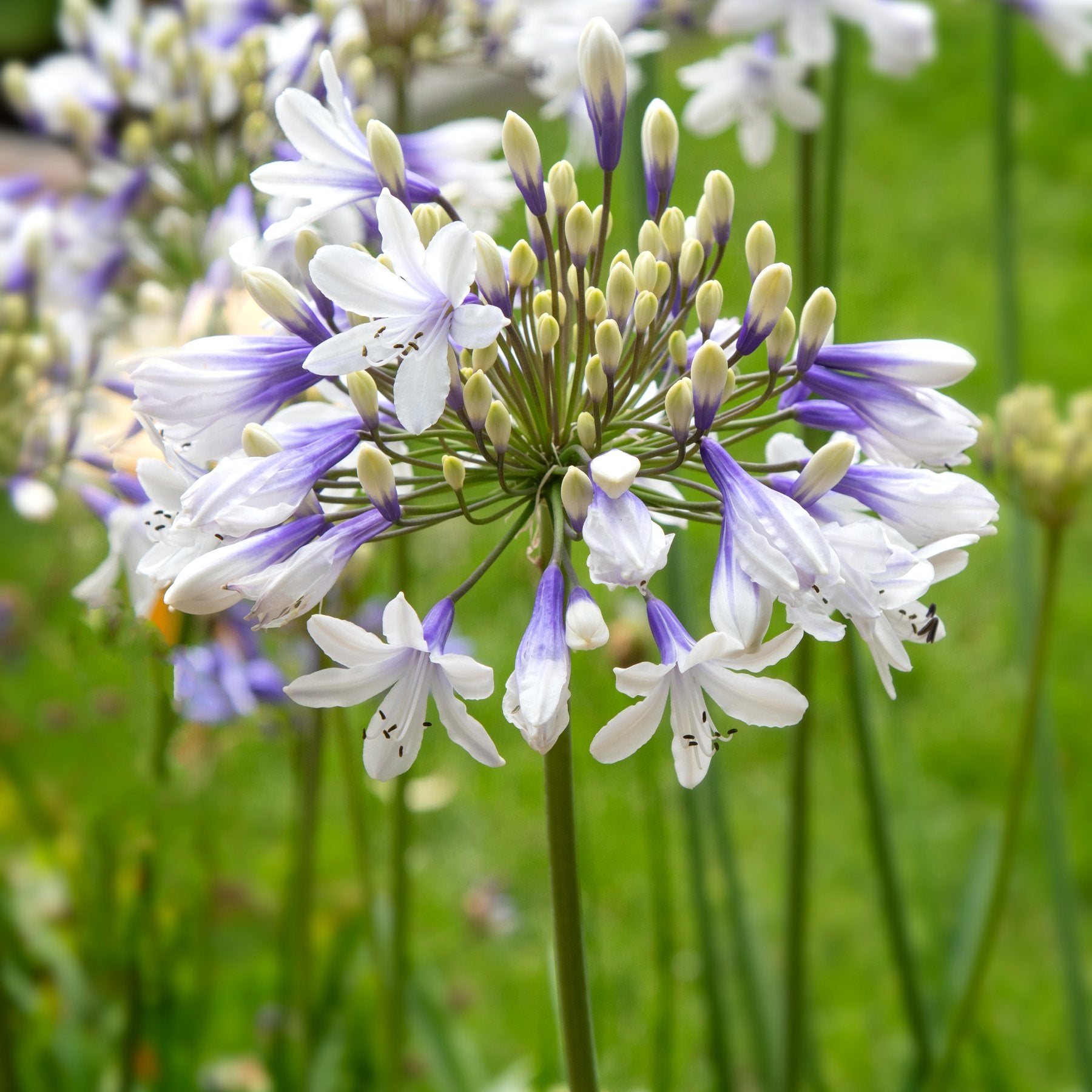Spectacular Agapanthus: Enhancing Your Yard's Charm
Spectacular Agapanthus: Enhancing Your Yard's Charm
Blog Article
Understanding the Art of Agapanthus Treatment: Necessary Actions for Healthy Growth and Dynamic Blossoms
In the world of horticulture, the cultivation of agapanthus stands as a gratifying undertaking for those that look for to support these stylish blooming plants. From picking the appropriate selection to mastering trimming strategies, the trip towards growing prospering agapanthus plants is multifaceted and holds the key to opening the complete capacity of these botanical treasures.

Choosing the Right Agapanthus Selection

When picking the right Agapanthus range for your garden, consider elements such as environment viability, blossom color, and development routine. Agapanthus, commonly referred to as Lily of the Nile or African lily, can be found in a selection of colors ranging from shades of purple and blue to white. Choose a blossom shade that complements your existing garden palette to produce a harmonious landscape. Additionally, consider the environment in your area to guarantee the Agapanthus variety you choose can grow in your particular problems. Some selections are a lot more tolerant of cool temperatures, while others choose warmer climates. Recognizing the development practice of different Agapanthus selections is critical for proper placement within your garden. Some ranges have a clumping growth routine, suitable for containers or boundaries, while others have an even more dispersing nature, ideal for ground cover or mass plantings. By carefully assessing these elements, you can pick the excellent Agapanthus range to enhance the appeal of your yard.
Perfect Growing Conditions
Considering the optimal environmental requirements is important for successful Agapanthus cultivation. Agapanthus thrives in well-draining dirt with a somewhat acidic to neutral pH degree. When planting, choose a place that receives complete sunlight to partial color. In hotter climates, supplying some afternoon shade can prevent scorching of the leaves. Agapanthus plants are delicate to cool temperature levels and should be secured from frost during winter season.
To guarantee healthy development and vibrant blooms, plant Agapanthus light bulbs at a depth of about 2-4 inches and area them 8-12 inches apart. Mulching around the base of the plants aids maintain wetness and suppresses weed development.
Watering and Fertilizing Tips
Keeping proper wetness degrees and offering necessary nutrients are key components in the care program for Agapanthus plants. When it comes to sprinkling Agapanthus, it is critical to strike an equilibrium. These plants favor consistently damp dirt but are prone to root rot if overwatered.
Feeding Agapanthus is crucial for promoting healthy development and prolific flowers. Use a well balanced fertilizer, such as a 10-10-10 formula, in the very early springtime as brand-new development arises. By complying with these watering and fertilizing pointers, you can guarantee your Agapanthus plants flourish and generate vibrant, resilient flowers.
Trimming Strategies for Agapanthus
Pruning Agapanthus plants at the ideal times and with proper techniques is essential for keeping their health and advertising ideal development and blooming. The perfect time to prune Agapanthus is in late winter months or early springtime prior to brand-new development emerges.
For flowered stems, wait until the blossoms have actually perished and after that trim them back to the base. This not just cleans up the plant's appearance but additionally encourages the advancement of brand-new blossom buds. Deadheading invested blossoms can also reroute the plant's power right into creating more flowers rather than establishing seeds. However, if you want to collect seeds for propagation, leave some flowers to mature and completely dry on the plant.
Keep in mind to utilize tidy, sharp devices to make accurate cuts and lower the threat of presenting illness. Agapanthus. Regular trimming will help maintain your Agapanthus looking cool and healthy while guaranteeing a plentiful display screen of lovely blooms
Dealing With Common Pests and Diseases
After ensuring correct trimming techniques for Agapanthus, it is vital to deal with common insects and diseases that can influence the health and vigor of these plants. Agapanthus plants are generally hardy yet can still come down with particular concerns. One common parasite that impacts Agapanthus is the Agapanthus gall midget. This little, orange fly lays its eggs in the vegetation, resulting in distorted development and blossom buds that stop working to open. To combat this parasite, prune and damage any type of affected plant components you could try here and think about utilizing insecticidal soap.
Furthermore, Agapanthus plants can endure from origin rot if they are planted in badly draining soil. By being alert and taking prompt activity versus bugs and diseases, you can help your Agapanthus plants flourish and create dynamic blossoms. Agapanthus.

Conclusion
Finally, understanding the art of agapanthus treatment includes selecting the appropriate selection, providing optimal planting problems, proper watering and fertilizing, proper trimming techniques, and dealing with common parasites and conditions. By following these essential browse around these guys actions, you can make sure healthy development and dynamic blooms for your agapanthus plants. Keep in mind to routinely keep an eye on and keep your plants to advertise their overall wellness and durability.
To ensure healthy and balanced development and dynamic flowers, plant Agapanthus light bulbs at a deepness of concerning 2-4 inches and space them 8-12 inches apart. By adhering to these watering and fertilizing pointers, you can guarantee your Agapanthus plants thrive and generate vibrant, durable blooms.
One usual pest that affects Agapanthus is the Agapanthus gall midget. Additionally, Agapanthus plants can experience from origin rot if they are grown in inadequately draining dirt. By adhering to these necessary actions, you can guarantee healthy look what i found and balanced growth and lively blossoms for your agapanthus plants.
Report this page